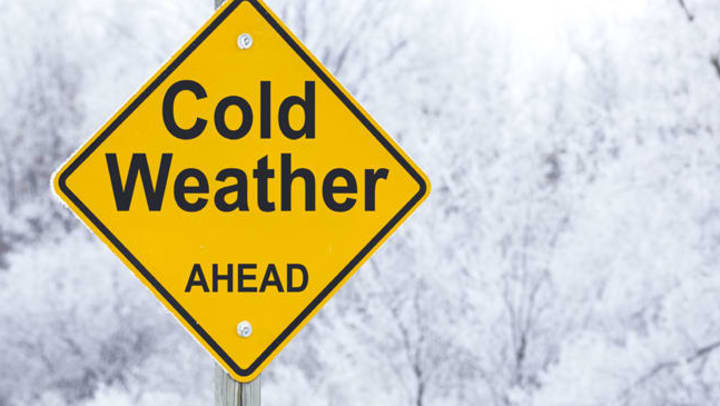Today’s and tomorrow’s dangerous wind chills and snowfall can create a high risk of car accidents, hypothermia, frostbite, carbon monoxide poisoning, and heart attacks from overexertion.
Winter storms bringing extreme cold, freezing rain, snow, ice, and high winds can:
- Last for hours or several days.
- Knock out heat and power, burst pipes, and cause loss of communication services.
- Place older adults, young children, and sick individuals at greater risk for injury.
In a winter storm and wind chill warning like today, you should:
- Take shelter immediately.
- Pay attention to the weather reports and watch your local news station for continuous updates.
- Stay warm inside. Set your heat to at least 68–70°F. Close off rooms you are not using, and keep the basement door closed. Place a rolled towel in front of all doors to keep out drafts.
- Stay off the road if possible.
- Stay indoors and dress warmly. Double up on socks and sweaters if need be and wear slippers.
- Use generators outside only and away from windows.
- If you need to go outside, limit your time.
- Be prepared for power outages.
- Listen for emergency information and alerts.
- Look for signs of hypothermia and frostbite.
- Check on family members and neighbors.
- Keep pets inside.
How to prepare or stay prepared:
- Know your area’s risk for winter storms.
- Prepare your home to keep out the cold with insulation, caulking, and weather stripping. Learn how to keep pipes from freezing. Test smoke alarms and carbon monoxide detectors with battery backups.
- Gather supplies in case you need to stay home for several days. Do not forget the needs of pets, children, and seniors. Have bottled water and extra batteries and flashlights.
- Create an emergency supply kit for your car. Include jumper cables, sand, a flashlight, warm clothes, blankets, bottled water, and non-perishable snacks. Keep the gas tank as full as possible.
- Have an emergency plan created with your family and practice it.
Recognize and Respond
- Frostbite causes loss of feeling and color around the face, fingers, and toes.
- Signs: Numbness, white or grayish-yellow skin, firm or waxy skin
- Actions: Go to a warm room. Soak in warm water. Use body heat to warm. Do not massage or use a heating pad.
- Hypothermia is an unusually low body temperature. A temperature below 95 degrees is an emergency..
- Signs: Shivering, exhaustion, confusion, fumbling hands, memory loss, slurred speech, or drowsiness
- Actions: Go to a warm room. Warm the center of the body first — chest, neck, head, and groin. Keep dry and wrapped up in warm blankets, including the head and neck.
- The following illnesses may make it harder for your body to stay warm:
- Diabetes can keep blood from flowing normally to provide warmth.
- Thyroid problems can make it hard to maintain a normal body temperature.
- Parkinson’s disease and arthritis can make it hard to put on more clothes, use a blanket, or get out of the cold.
- Memory loss can cause wandering and a person to go outside without the right clothing.
Links for more information on how to stay safe today and in the future:
- Learn how to stay safe before, during, and after winter storms and extreme cold: www.ready.gov/winter #WinterSafety
- Talk with your family about how to get prepared for extreme #cold weather: www.ready.gov/kids/know-the-facts/winter-storms-extreme-cold
- Stay safe during winter weather. Monitor weather alerts and have a preparedness kit ready: www.ready.gov/kit #WinterSafety
- Get prepared by creating your emergency kit: www.ready.gov/build-a-kit
- Bring your furry friends inside when temperatures take a dip. More pet tips here: www.ready.gov/animals
- #Winterstorms can cause power outages. Share these tips and prepare: www.ready.gov/power-outages


